First Off
In order to improve the entire experience in educational institutions, from elementary schools to colleges, effective signage is essential. In these settings, signage serves as more than just a wayfinding device; it is an effective instrument for safety, navigation, and communication. This blog post will discuss the many facets of good signage in educational settings and the advantages it has for visitors, employees, and students.
1. Directions and Charting
Helping with navigation and wayfinding is one of the main purposes of signage in educational facilities. Finding the right classroom, office, or department can be a difficult chore without good signage, whether it's a vast university campus or a sprawling high school. Students, employees, and visitors can find their location more quickly and easily when there is effective signage that includes room numbers, maps, and clear directions. This facilitates a more seamless daily routine by cutting down on confusion and stress while also saving time.
2. Security and Readiness for Emergencies
Signage that is unambiguous and succinct can save lives during emergencies. Signage indicating emergency routes, fire exits, and safety instructions must be well-designed for educational facilities. Everyone on the property, especially those who are not familiar with the layout, can react to situations swiftly and safely thanks to this sign. Additionally, it contributes create a safer atmosphere for everybody by keeping the peace during exercises or actual situations.
3. Identification & Branding
Building and enhancing educational institutions' identities and brands is largely dependent on their use of effective signage. Students and employees feel a feeling of pride and belonging when they see a well-designed school logo, motto, or other branding components on signs. These factors also affect visitors, contributing to the establishment of a favourable perception and confidence in the establishment.
4. Communication of Information
Education establishments are dynamic settings where knowledge is ever-changing. An effective means of distributing notifications, news updates, event schedules, and critical information is through signage. Posters, bulletin boards, and digital displays can be thoughtfully arranged to alert everyone about important dates, events, and deadlines for coursework.
5. Inclusivity and Accessibility
The function that good signage has in advancing inclusivity and accessibility is another important factor. In order to ensure that people with disabilities can easily navigate the campus, educational institutions should give priority to designing signage that complies with accessibility standards. Signage can meet a wide range of needs; tactile graphics, braille signage, and well-contrasted text are just a few examples.
6. Appealing Looks
Effective signage may boost a building's aesthetic appeal while still serving a functional purpose, which is crucial. An setting that is visually pleasing can be created by designing signage to blend in with the campus's architectural features. It can also help draw in potential students and their families by fostering a favorable environment.
7. Effective Facility Administration
Signage that is properly labeled can help maintenance personnel immediately identify places that need cleaning or repair, which can facilitate effective facility management. Maintaining the best possible condition of the campus requires signage describing the locations of equipment, restrooms, utility rooms, and maintenance instructions.


